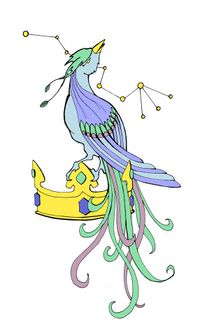Good Green Oak

Rules
Spring Magnitude 6
Urizen Lore
This ritual is part of Urizen lore rather than Imperial Lore. Any Urizen character with the appropriate lore can master or perform this ritual. A character from another nation who mastered the ritual before it became part of Urizen lore may still perform it, but does so under the usual rules for performing a ritual learned from a ritual text.
Performing the Ritual
Performing this ritual takes at least 2 minutes of roleplaying. This ritual targets a character, who must be present throughout.
This ritual is an enchantment. A target may only be under one enchantment effect at a time.
Effects
The target gains one additional rank of endurance.
In addition, while under the enchantment the target experiences a roleplaying effect: you become frustrated with discussion of ideas and concepts, and prefer tangible, straightforward solutions to problems.
The effect lasts until the start of the next Profound Decisions Empire event.
Additional Targets
This ritual can affect additional characters from the same banner. Each additional character increases the magnitude by 4. Additional characters must be present throughout.
Description
This ritual was one of the very first to become part of Urizen lore, following the Autumn Equinox 383YE. Contributed by Mord Thorntarry of the spire of Auric Horizen, the ritual was one of those contained in the book Meditations. Written by Callus Tacitus, Dean of the Lyceum during the reign of Empress Britta, the book also contained Swords in the Noonday Sun, Hook of the Hoarfrost Guardian, Eyes of the Hills and two rituals that had already become part of Imperial lore - Find the Best Path and Hammers of the Brilliant Shore.
The ritual draws on the resonance of vitality in a manner reminiscent of the undeniably more potent Imperial Skin of Bark, Blood of Amber. It fills the recipient with a surge of resilience and good health, both physical and mental; they do not tire as easily; and they enjoy almost supernatural fortitude. complexity and subtlety are both dissonant for the realm of Spring, however, and the magic used in this ritual has a notable effect on the attitudes of the recipient. They tend to have little patience for immaterial concepts, theories, and ideas, preferring to interact with the world in immediate, concrete, and straightforward ways - much like a highly lineaged briar.
According to Meditations, this ritual was somewhat controversial when it was first formulated. Callus persevered however and the design apparently drew on an "unpolished" ritual that certain Navarr vates had been using for centuries. It was initially codified with their scholastic and political support despite criticism from magicians who pointed to Strength of the Bull as a more efficient way of creating an almost identical effect. When a Declaration of Imperial Lore was raised in the Imperial Conclave for this ritual it was defeated. To quote Callus however "It is all very well saying “it is easier to create this enchantment with Summer magic!” but the fact remains that, even in the spires of my homeland, not everyone is a Summer magician, and when you do not understand the lore the enchantment might as well require you to juggle the moon and the sun for all the ease with which you can master it."
Common Elements
As the name suggests this ritual resonates strongly with the astronomantic constellation of the Oak. As with many enchantments designed to empower a person, performing the ritual often involves adorning or girding the target with objects symbollic of the strength it provides. Freshly gathered leaves or blossoms are particularly effective, but wholesome food and drink might also be consumed as part of the ritual. So clear is the connection between the ritual and the symbolism of trees that some covens recommend performing the ritual in the presence or shade of a sturdy tree, the older the better.